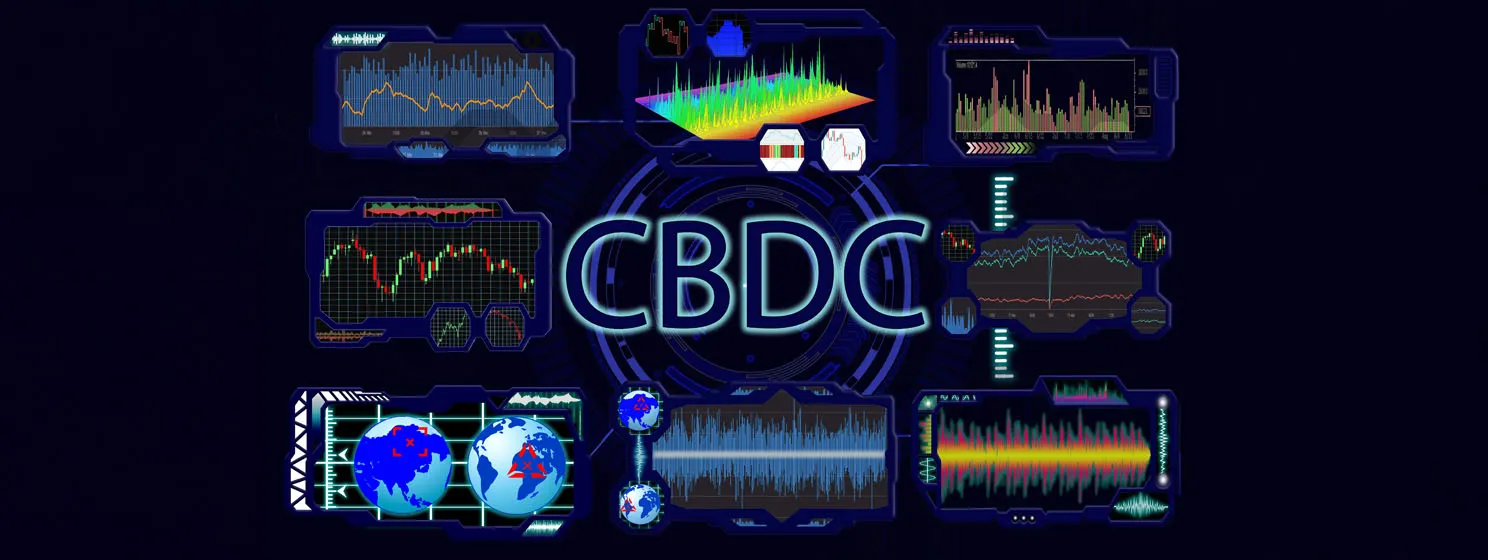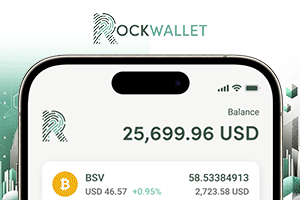|
Getting your Trinity Audio player ready...
|
Here’s something a little different from the slickly designed Bitcoin wallets we’ve become (a little too) used to. Gateway Wallet, which has been around for just three months, was recently updated. Though it runs on BSV, it’s designed to show balances in local currencies and to get new users up and running almost immediately.
Gateway Wallet is probably a useful app for onboarding newcomers, but it’s worth a look even for experienced Bitcoiners who long for the early days of simplicity and speed. In many ways, it’s appropriate for the app to run on BSV, which itself exists as proof of what Bitcoin should have been. When was the last time you heard someone say a wallet is aimed at “the unbanked” like they really meant it?
Users create a new wallet just by visiting the address mybsv.io. Right there in the center of the screen is a QR code for receiving funds, and it’s possible to create profiles to keep balances separate, e.g., business, personal, or whatever you like.
As well as performing simple transactions, Gateway Wallet has an Apps Hub for users to try other on-chain data functions. There’s a Profile Manager, a Calculator, a Document Signer, and a Live Authenticator for photos. Patrick says his next move is letting users upload videos.
Interestingly, Gateway Wallet doesn’t come from a team of developers—or even a programmer, per se. Speaking to CoinGeek, Gatgeway Wallet Developer Patrick Phan said he’s actually a retired accountant who’s done only basic programming in the past. So far he’s worked on all aspects of the project by himself, and the web app behind the wallet is built with artificial intelligence (AI) assistance. That’s both a sign of the times and of things to come.
Gateway Wallet’s explanation material also feels, in a way, very “old school” Bitcoin—in that it touts the same benefits Bitcoiners once did, many years ago. There were promises of fast, cheap digital payments for everyone, anywhere, without lengthy signups and financial intermediaries taking a cut. Those who’ve been around for many years remember this messaging, before it all disappeared quietly in the mid-2010s and got replaced by tales of 1000x dollar gains, arriving at parties in rented Lambos, and the HODL cohort’s mockery of anyone who actually wanted to spend Bitcoin.
As its video says, “Every single payment method is designed to cost you money. Blockchain promised to fix this. It didn’t. Gateway Wallet ends this.”
As a browser-based app, Gateway Wallet feels like it could use some more refinement before it’s ready to take on the more popular alternatives in the Bitcoin/blockchain space. But there’s also something great about its simplicity and the speed at which a new user can go from complete noobdom to sending transactions. There’s definitely some benefit in that, and sending people a URL to click, rather than an app to download and e-forms to complete, could actually help with adoption.
Find out more about the motives and vision behind Gateway Wallet and its use of BSV in particular, in our interview with Phan here:
When did you decide to create Gateway Wallet and why?
“I’m actually a retired accountant, not a programmer. I did a little programming in the early days, basic and IBM mainframe work, but when AI took the coding chore away, it enabled me to get into app development.
I’ve been thinking about this since 2015, when I realized we could put data on the blockchain. Back then, it was only 80 bytes, but today on BSV—The Original Bitcoin—it’s really unlimited, and storage costs keep dropping. I started by making small functional apps like calculators, storing them on the blockchain, and calling them up in the browser.
I had been working with different apps separately, but with Gateway Wallet officially released about three months ago, I could bring all these apps together into a new ecosystem. This little achievement was quite interesting, though few realize it, because it means we can store code on the blockchain and execute it in our browser.”
What’s the advantage of Gateway Wallet over other BSV wallet options?
“The main advantage is what storing executable code on-chain enables, but more importantly, what blockchain enables for value transfer. Blockchain allows value to be transmitted over the Internet, which means we don’t need the banks’ architecture to augment value transfer; we can transfer it directly.
So, a simple ‘Show QR for payment’ feature is really an EFTPOS terminal without any of the costs. For the unserved and underserved, it means they can have the same access. The QR cart scanning becomes a supermarket terminal, and coupled with the CRM, it’s full customer management. These business tools are available to anyone at virtually no cost.
When users create a Gateway Wallet, the wallet is funded with a little BSV so they can use the wallet immediately. When users introduce others to Gateway Wallet through scanning the weblink, they get paid.
There’s a messaging system and membership management, too. This enables easy group messaging—essentially email on the blockchain— without it being labeled as spam. In fact, you pay people to message them, so anyone would be happy to receive more messages.
But here’s what’s really important about money: Gateway Wallet shows the value of BSV in their national currency. This really means their national currency is effectively tokenized on BSV, and the exchange mechanism is the global currency exchange system.
I’m always asked, ‘how do we convert back to local currency if they use this system?’ My answer is: when more people use BSV and accept BSV, they won’t need the off-ramp. When? I think it’s inevitable, which is why I don’t think stablecoins are the solution. Thinking in local currency with the underlying value being BSV, it becomes the common currency if the unserved and underserved use it, like with Gateway Wallet.
The concept of wallet address being an identity is important, too. A user can have different identities when using the wallet. They can use one wallet address for their hot wallet and another for their cold wallet storage. They can auto-transfer from hot wallet to cold wallet as well.
The bootloader is the same HTML access code that users link to when they access http://mybsv.io/wallet.html. This means that if they download this small HTML program, they can use Gateway Wallet even if http://mybsv.io disappears. The program is beyond my control; I only control the improvements and upgrades.
The technical advantages are:
- No dedicated servers needed – everything runs from the blockchain
- Platform agnostic – works on any browser, no installs, no signups
- User owns their data – it stays with them
- Integrated ecosystem – instead of separate apps, everything works together
- Truly decentralized – users can download and run it independently
- Multiple identities – hot wallet, cold storage, business personas, all managed in one interface
- Paid messaging system – email on blockchain where senders pay recipients, eliminating spam
- Instant usability – wallets come pre-funded, so users can transact immediately
- Incentivized growth – users get paid for introducing others
Someone with a basic phone in rural Kenya gets the same business infrastructure as a shop in Manhattan—payment processing, inventory management, customer relationship tools, membership management, and spam-free communication—all for essentially free. People don’t want to learn about blockchain—they want to run their businesses efficiently. Gateway Wallet just gives them those tools.”
What’s the response from other developers about Gateway Hub?
“Mostly skepticism in the beginning. They still think they need servers to get their apps operational. Recently, one or two have offered to help, but unfortunately, this was developed outside of the familiar developer platforms like GitHub. I don’t use GitHub and don’t know how to use it.
What they don’t get is that Gateway Wallet scales. Without the need for servers—as the miners are the main servers for storage—Gateway Wallet scales to any number of users, and I don’t have to pay for server costs and maintenance. We just pay the miners their mining fees.
There are no other developers working on this; it’s just me using AI to build apps I think people will find useful. Being an accountant, not a programmer, AI helps bridge that gap. For years, I was building separate apps—golf tournament organizers, document signers, CRM systems, calculators—all stored on-chain. Three months ago, when I launched Gateway Wallet officially, I could bring them all together.
I’m finalizing the golf tournament management app right now. When finished, it will enable members to use the app to organize and keep track of tournaments in real time, communicate, and transfer value as well. It’s not far-fetched to say that people can compete between different courses and countries.
My latest app is TootToot, which will be like TikTok on the blockchain, except you own your own data. It will have Toot Video, Toot Music, and even chatrooms like X chat.
These apps are usually server resource hungry—TikTok, tournament management systems, real-time communications—they typically require massive server farms and ongoing costs. But not if served by the blockchain. The traditional developers are thinking in the old paradigm – they can’t imagine applications without servers, databases, and ongoing infrastructure costs. But when everything runs from the blockchain and executes in the browser, those concerns disappear. A golf club in rural Thailand can organize tournaments with clubs in Australia, handle payments, share videos of their games through TootToot, all through the blockchain without any server infrastructure. Now users can access everything through one interface. If people use them and don’t realize they’re using BSV, that’s perfect.”
What’s your vision for all this in 5-10 years time?
“I just want to keep building useful tools. The three months since Gateway Wallet’s official release have been encouraging. My hope is that someone in rural Philippines can access the same business tools as someone in New York, all integrated together, without needing to understand cryptocurrency.
What’s really exciting is developments like Huawei’s Mate 70 with satellite communications built into mobile phones. This is a reality now; it surpasses Starlink which requires an external dish and separate power. This means emerging countries don’t have to build expensive 5G tower networks to get better coverage and access. For Gateway Wallet, this is very positive because it works on any browser.
Imagine a small business owner in rural Africa; they can now have satellite Internet access directly on their phone, open a browser, and instantly access the same business management tools, payment systems, and organizational apps as anyone in New York or London. No infrastructure needed, no permissions required, no installations.
If this approach works well, others might find it interesting too. But for now, I’m focused on making tools people actually want to use, knowing that the connectivity barrier is rapidly disappearing.”
Watch: Exchanging Bitcoin with Orange Gateway

 08-27-2025
08-27-2025 





